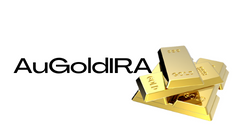
Introduction
Gold is not only visually appealing but also a smart investment choice, especially during economic downturns. If you prefer not to deal with physical bullion, gold mutual funds can be an excellent alternative. By investing in a gold mutual fund, you pool your money with other investors, allowing you to get more value for your investment.
Steps to Invest in Gold Mutual Funds
If you have experience buying stocks, understanding how gold mutual funds work will be relatively easy. You can purchase mutual funds just like stocks, with each share representing a portion of gold. For example, one share might equal a tenth of an ounce of gold.
Research and Choose a Gold Mutual Fund
Before diving into the world of gold mutual funds, it's crucial to select a reputable fund company. There are numerous options available, each with its unique returns and expense ratios. Consider well-established funds like First Eagle Gold Fund or Allspring Precious Metals Fund, both of which have a history of offering high returns.
Open an Investment Account
The next step is to open a brokerage account. You have two choices: an online brokerage or a managed brokerage account. With an online brokerage account, you can buy and manage your funds independently. On the other hand, a managed account offers the expertise of a human or robo-advisor who will make investment decisions based on your retirement plans and age.
Fund Your Account
Once your account is set up, it's time to fund it. You can do this by transferring money from your bank account or by paying through a check, depending on the options provided by your brokerage.
Place Your Investment Order
Deciding which funds to buy and when to place your order are essential aspects of investing in gold mutual funds. You can either buy a specific number of shares or enter a fixed dollar amount to determine the number of shares you'll receive. Mutual fund prices are based on their net asset value (NAV) at the end of each trading day.

Monitor and Rebalance
After purchasing mutual funds, it's crucial to monitor your account's performance regularly. If a fund is not performing as expected, you have the option to sell it and invest in another fund. Keep in mind that mutual fund prices are not as readily available as stock prices, as they are determined at the end of the trading day.
Factors to Consider Before Investing in Gold Mutual Funds
Investment Goals and Risk Tolerance
Before investing in any mutual fund, it's important to understand your investment goals and risk tolerance. Are you seeking short-term profits or investing for retirement? Your investment strategy will differ depending on your goals. Speculative funds may offer higher returns but come with higher risk, while established funds are more stable and suitable for those near retirement age.
Expense Ratio and Fees
All mutual funds have an expense ratio, which represents the fund's costs for marketing, administration, portfolio management, and distribution. Be mindful of these expenses, as they are typically a percentage of the fund's average net assets. Additionally, consider any fees associated with the fund and the broker who sold it.
Fund Manager Reputation
Choosing a fund managed by someone with a solid reputation is crucial. Look for reviews from other investors to gain insights into a fund manager's track record and reputation. Avoid fund managers with a negative reputation and seek those with a history of successful performance.
Performance History
When considering a mutual fund, evaluate its historical performance. Has it consistently delivered high returns, or has it experienced significant fluctuations? If a fund has recently experienced a downturn, you may want to explore alternative options.
Additional Considerations
Minimum Required Investment
Gold mutual funds typically have low minimum investment requirements, often ranging from $1,000 to $3,000. This makes them accessible to a wide range of investors.

Investing Through a Retirement Account
If you already have a retirement account, such as a 401(k), you can use the funds to invest in gold mutual funds. You have the option to roll the money over to a new account or withdraw it to fund the gold mutual fund account yourself. Rollovers are usually the simpler choice, as the plan administrator handles the transfer.
Taxation of Returns
The taxation of mutual fund returns depends on the holding period. If you hold the fund for less than a year, any distributions will be taxed at your ordinary income tax rate. If you hold the fund for 12 months or longer, you'll be subject to capital gains tax. It's important to understand the tax implications before selling your mutual fund.
Gold Mutual Funds Compared to Other Gold Investments
Gold mutual funds are not the only investment option for those interested in precious metals. Other alternatives include:
Gold ETFs
Gold ETFs, or exchange-traded funds, function similarly to gold mutual funds. The key difference is that ETF prices fluctuate throughout the day.
Gold Mining Stocks
Investing in gold mining stocks involves purchasing shares in gold mining companies. Prices of these stocks are influenced by factors such as audits, management performance, and environmental changes.
Bullion
Investors can also choose to invest in physical gold by purchasing bullion through an IRA. However, it's important to note that IRA-purchased gold cannot be stored at home and must be kept in a depository.
Conclusion
Investing in gold mutual funds can be a smart choice for those looking to diversify their portfolios and benefit from the stability of gold. By following the steps outlined in this guide and considering the factors mentioned, you can make informed investment decisions that align with your financial goals. Always remember to monitor your investments regularly and consult with a financial advisor if needed.
If you're ready to take the next step in investing in gold mutual funds or need guidance in navigating this investment option, take our six-question quiz to find the perfect gold IRA partner for you.
Frequently Asked Questions
What precious metal is best for investing?
This question is dependent on the amount of risk you are willing and able to accept as well as the type of return you desire. Gold has been traditionally considered a haven investment, but it's not always the most profitable choice. If you are looking for quick profits, gold might not be the right investment. If you have the patience to wait, then you might consider investing in silver.
If you're not looking to make quick money, gold is probably your best choice. If you want to invest in long-term, steady returns, silver is a better choice.
How can I withdraw from a Precious metal IRA?
First decide if your IRA account allows you to withdraw funds. You should also ensure that you have enough money to cover any fees and penalties associated with withdrawing funds.
If you are willing to pay a penalty for early withdrawal, you should consider opening a taxable brokerage account instead of an IRA. You will also have to account for taxes due on any amount you withdraw if you choose this option.
Next, determine how much money you plan to withdraw from your IRA. The calculation is influenced by several factors such as your age at withdrawal, the length of time you have owned the account and whether or not you plan to continue contributing to retirement plans.
Once you know how much of your total savings to convert to cash, it's time to choose the type of IRA that you want. Traditional IRAs let you withdraw money tax-free after you turn 59 1/2, while Roth IRAs require you to pay income taxes upfront but allow you access the earnings later without paying any additional taxes.
Once the calculations have been completed, it's time to open a brokerage accounts. To encourage customers to open accounts, brokers often offer signup bonuses and promotions. However, a debit card is better than a card. This will save you unnecessary fees.
When it comes time to withdraw your precious metal IRA funds, you will need a safe location where you can keep your coins. Some storage facilities will take bullion bars while others require you only to purchase individual coins. You'll have to weigh the pros of each option before you make a decision.
For example, storing bullion bars requires less space because you aren't dealing with individual coins. However, you'll need to count every coin individually. You can track their value by keeping individual coins.
Some people like to keep their coins in vaults. Others prefer to place them in safe deposit boxes. Regardless of the method you prefer, ensure that your bullion is safe so that you can continue to enjoy its benefits for many years.
Who is entitled to the gold in a IRA that holds gold?
The IRS considers gold owned by an individual to be “a type of money” and is subject taxation.
To be eligible for the tax-free status, you must possess at least $10,000 gold and have had it stored for at least five consecutive years.
Although gold can help to prevent inflation and price volatility, it's not sensible to have it if it's not going to be used.
If you plan to eventually sell the gold, you'll need a report on its value. This could impact the amount of capital gains taxes your owe if you cash in your investments.
To find out what options you have, consult an accountant or financial planner.
Can I keep physical gold in an IRA?
Gold is money. Not just paper currency. People have been using gold for thousands of years to store their wealth and protect it from economic instability and inflation. Today, investors use gold as part of a diversified portfolio because gold tends to do better during financial turmoil.
Many Americans now invest in precious metals. It's not guaranteed that you'll make any money investing gold, but there are several reasons it might be worthwhile to add gold to retirement funds.
Another reason is that gold has historically outperformed other assets in financial panic periods. Gold prices rose nearly 100 percent between August 2011 and early 2013, while the S&P 500 fell 21 percent over the same period. During turbulent market conditions gold was one of few assets that outperformed stock prices.
Another benefit to investing in gold? It has virtually zero counterparty exposure. Your stock portfolio can fall, but you will still own your shares. Gold can be worth more than its investment in a company that defaults on its obligations.
Finally, gold is liquid. This means that, unlike most other investments, you can sell your gold anytime without worrying about finding another buyer. You can buy gold in small amounts because it is so liquid. This allows you take advantage of the short-term fluctuations that occur in the gold markets.
How much should your IRA include precious metals
It is important to remember that precious metals can be a good investment for anyone. They don't require you to be wealthy to invest in them. You can actually make money without spending a lot on gold or silver investments.
You might consider purchasing physical coins, such as bullion bars and rounds. Stocks in companies that produce precious materials could be purchased. Or, you might want to take advantage of an IRA rollover program offered by your retirement plan provider.
Regardless of your choice, you'll still benefit from owning precious metals. They offer the potential for long-term, sustainable growth even though they aren’t stocks.
And, unlike traditional investments, their prices tend to rise over time. So, if you decide to sell your investment down the road, you'll likely see more profit than you would with traditional investments.
Statistics
- Instead, the economy improved, stocks rebounded, and gold plunged, losing 28 percent of its value in 2013. (aarp.org)
- This is a 15% margin that has shown no stable direction of growth but fluctuates seemingly at random. (smartasset.com)
- Gold is considered a collectible, and profits from a sale are taxed at a maximum rate of 28 percent. (aarp.org)
- Indeed, several financial advisers interviewed for this article suggest you invest 5 to 15 percent of your portfolio in gold, just in case. (aarp.org)
- (Basically, if your GDP grows by 2%, you need miners to dig 2% more gold out of the ground every year to keep prices steady.) (smartasset.com)
External Links
investopedia.com
- Do You Need a Gold IRA to Get Retirement?
- What are the Options Types, Spreads. Example. And Risk Metrics
wsj.com
- Saddam Hussein’s InvasionHelped Uncage a Bear In 1989 – WSJ
- Do you want to keep your IRA gold at home? It's not exactly legal – WSJ

















